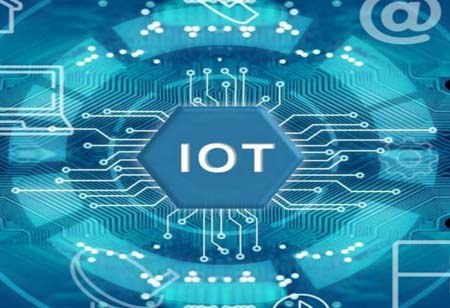THANK YOU FOR SUBSCRIBING
Elder Care : How the Internet of Things (IoT) Can Make it Better
Falling is the second leading cause of accidental or unintentional injury deaths worldwide, and it becomes more common as people get older. As a result, fall prevention measures must be implemented both at home and in care facilities.

By
Apac CIOOutlook | Monday, May 03, 2021
Stay ahead of the industry with exclusive feature stories on the top companies, expert insights and the latest news delivered straight to your inbox. Subscribe today.
Falling is the second leading cause of accidental or unintentional injury deaths worldwide, and it becomes more common as people get older. As a result, fall prevention measures must be implemented both at home and in care facilities.
Fremont, CA : Shelter-in-place orders issued in response to the COVID-19 pandemic have exacerbated the social isolation and loneliness experienced by many elderly and vulnerable people, increasing their risk of serious health complications. This trend, combined with societal shifts such as reduced intergenerational living, greater geographic mobility, and less cohesive communities, has put the elderly at risk of isolation and, as a result, danger.
Fortunately, technology can assist caregivers, healthcare professionals, or family members in detecting and alerting elderly persons' changes in behavior, which can help prevent serious issues.
The Internet of Things is uniquely positioned among the solutions available to enable caregivers to support the well-being of those at risk when others are unable to be present. IoT-enabled monitors reduce emergency hospital admissions and enable elders to stay in their homes longer, safely by tracking key health indicators such as dehydration and malnutrition, as well as behavioral changes such as decreased mobility.
Check Out This : Eldercare Review
Falling is the second leading cause of accidental or unintentional injury deaths worldwide, and it becomes more common as people get older. As a result, fall prevention measures must be implemented both at home and in care facilities. Fall prevention, prediction, and diagnosis include recording events, recognizing risk factors (both human and environmental), and emphasizing preventive and corrective measures. And they're all possible thanks to the Internet of Things.
Traditional fall-detection technologies require the user to wear or hold the gadget and push a button when they fall. Nothing is registered if a person is ill but does not collapse, which is why it is important to track pain by other means, such as an algorithm that detects a shift in the patient's general well-being.
Healthcare professionals may use IoT sensors to monitor improvement over longer periods of time (days or months) and assess if an individual's health is declining, putting them at risk of dropping in the future. Caregivers may intervene and offer more care if they provide this information before an accident happens.
IoT solutions, when combined with tele-assistance systems, will reassure families that their loved ones are safe living alone by transmitting vital information indicative of declining health, ensuring that early warning signs are not missed.
Remote assistance solutions based on IoT technology, such as geolocation pendants, motion detection sensors, and wrist bands, have already been developed by companies including SeniorAdom and Vitalbase. These solutions are intended to identify any possible behavioral changes that can occur as a result of a fall, physical impairment, or cognitive decline.
By predicting threats and responding rapidly in the event of an emergency, these creative strategies make it possible to help protect elderly populations. SeniorAdom can detect a potentially critical or abnormal situation and warn caregivers or relatives using a self-learning algorithm and an intelligent box wirelessly linked to sensors mounted in the house.
See Also :- Top Internet Of Things Solution Companies





